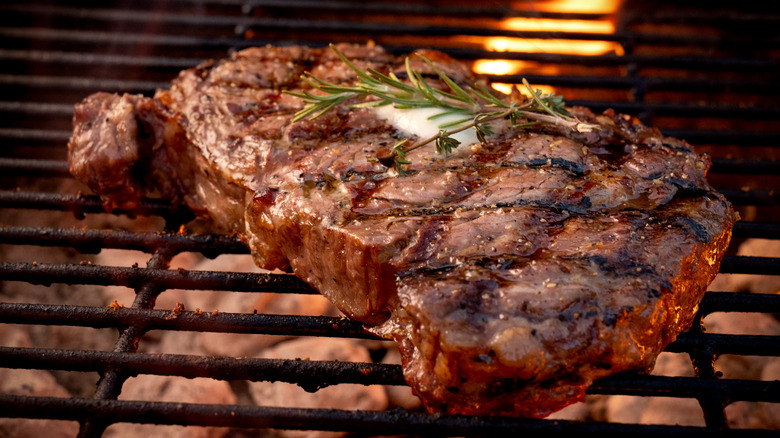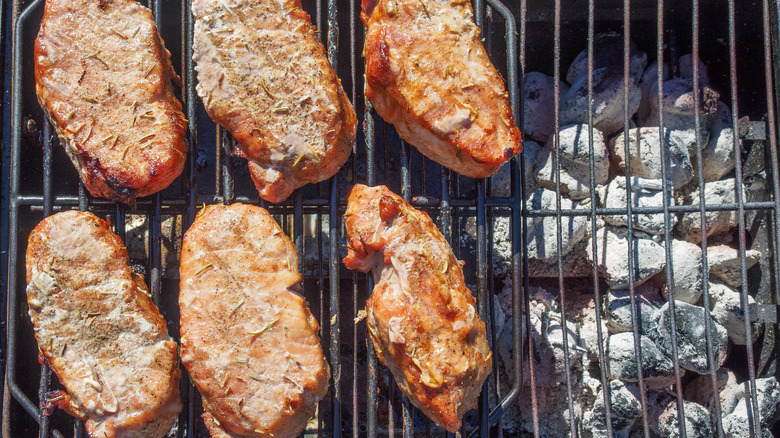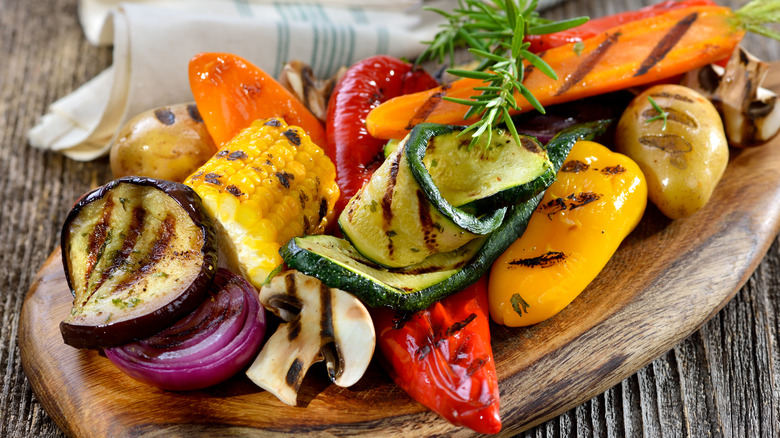A 2-Zone Fire Is The Key To Grilling Steak To Perfection
It seems as though every advertisement you see for grilling meat highlights a roaring flame licking the sides of a thick, beautiful steak on searing hot grates. But many with less grilling experience will cook steaks this way the entire time, leaving them with an overly charred piece of protein and flare ups that occur when the fat drips. While some fare benefits from a fast cook over direct heat, like grilled burgers or thinner pieces of meat, other foods — like bulkier steaks and grilled lobster tails — tend to get abused when overexposed to intense heat. This is why master grillers use a 2-zone fire to barbecue their beef to perfection.
A 2-zone fire uses the direct heat of hot charcoal on one side of the grill – the hot zone — to give steaks a delightfully caramelized outside while providing a low-temperature side — the cool zone — where they can cook slowly to achieve an optimal internal temperature without burning the outer edges. Optimally, the hot area of the grill should be at least 500 degrees Fahrenheit for that impeccable sear, whereas the cooler side should temp out between 200 and 300 degrees. The lower temperature of the cool area will allow heat to slowly circulate around your steak, cooking it evenly without over-charring. If you want more char on one side, you can move it back to the direct heat for a couple of minutes and you'll have the flawless sear you're looking for.
Building a proper 2-zone fire
If you're using propane, the 2-zone cooking method is as simple as turning up one side of your grill to high and letting the other side remain at a low temperature. But this isn't to say that making a direct and indirect heat source with charcoal is difficult. Creating a 2-zone fire with charcoal can be as simple as taking your spatula or tongs and pushing all the coals to one side of the grill once they are glowing and ready to use. Voilà, you have a 2-zone fire.
A trick many use to make it a little easier is to start the charcoal with a chimney starter. Once the coals are burned through, carefully pour them into one side of the grill. Just set your metal grate over the coals — which should be cleaned after every use for best results — and after it comes to temperature, you're ready to sear anything you need before finishing on the other side for a more indirect heat.
2-zones works for more than just steak
This method of grilling isn't just the best way to barbecue a steak. Essentially, any thicker cut of meat can be prepared to your exact specifications by utilizing the 2-zone grilling technique and letting it cook low and slow for as long as it needs. Bone-in cuts like a chunky pork chop or Flintstones-sized turkey leg will be easier to cook all the way through without burning when they have ample time to warm up at a lower temperature.
Large vegetables also benefit from 2-zone grilling. While smaller veggies can spend a minute or two over direct heat and be just how you want them, bulkier vegetables might get a nice sear, but they will burn before they're cooked throughout. Grilling for a lengthy period over high heat can quickly beat your barbecued produce into an unappetizing, mushy pulp. By utilizing two different temperature zones, you can achieve the best of both worlds by achieving an eye-catching BBQ char on your steak and veggies while ensuring they have a perfect texture and flavor in the middle.


